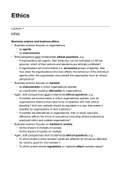DESIGN
INTRODUCTION
Geometric design is defined as the design or proportioning of the visible elements of the street
or highway.
The geometry of the roadway is of central importance since it provides the framework for the
design of other highway elements. In addition, the geometric design establishes the basic
nature and quality of the vehicle path, which has a primary effect upon the overall safety
characteristics of the street or highway.
The design of roadway geometry must be conducted in close coordination with other design
elements. These other elements include: pavement design, roadway lighting, traffic control
devices, transit, drainage, and structural design.
The design should consider safe roadside clear zones, bicycle and pedestrian safety
accommodation, emergency response, and maintenance capabilities.
The safety characteristics of the design should be given primary consideration. The initial
establishment of sufficient right of way and adequate horizontal and vertical alignment is not
only essential from a safety standpoint, but also necessary to allow future upgrading and
expansion without exorbitant expenditure of highway funds.
Appropriate Geometric Standards
The needs of road users in developing countries are often very different from those in the
industrialized countries. In developing countries, pedestrians, animal-drawn carts, etc., are
often important components of the traffic mix, even on major roads. Lorries and buses often
represent the largest proportion of the motorized traffic, while traffic composition in the
industrialized countries is dominated by the passenger car. As a result, there may be less need
for high-speed roads in developing countries and it will often be more appropriate to provide
wide and strong shoulders.
Traffic volumes on most rural roads in developing countries are also relatively low. Thus,
providing a road with high geometric standards may not be economic., since transport cost
savings may not offset construction costs. The requirements for wide carriageways, flat
gradients and full overtaking sight distance may therefore be inappropriate. Also, in countries
with weak economies, design levels of comfort used in industrialized countries may well be a
luxury that cannot be afforded.
,When developing appropriate geometric design standards for a particular road in a developing
country, the first step should normally be to identify the objective of the road project. It is
convenient to define the objective in terms of three distinct stages of development as follows:
Stage 1 – Provision of access
Stage 2 - Provision of additional capacity
Stage 3 – Increase of operational efficiency Developing countries, by their very nature, will
usually not be at stage 3 of this sequence; indeed most will be at the first stage.
However, design standards currently in use are generally developed for countries at stage 3
and they have been developed for roads carrying relatively large volumes of traffic. For
convenience, these same standards have traditionally been applied to low-volume roads that
lead to uneconomic and technically inappropriate designs.
A study to develop appropriate geometric design standards for use in developing countries has
been undertaken by the Overseas Unit of Transport Research Laboratory (TRL formerly TRRL).
The study revealed that most standards currently in use are considerably higher than can be
justified from an economic or safety point of view. Geometric design recommendations have
been published in Overseas Road Note 6.
In the above-mentioned Overseas Road Note 6 rural access roads are classified into three
groups.
Access roads are the lowest level in the network hierarchy. Vehicular flows will be very light
and will be aggregated in the collector road network. Geometric standards may be low and
need only be sufficient to provide appropriate access to the rural agricultural, commercial, and
population centers served. Substantial proportions of the total movements are likely to be by
non-motorized traffic.
Collector roads have the function of linking traffic to and from rural areas, either direct to
adjacent urban centers, or to the arterial road network. Traffic flows and trip lengths will be of
an intermediate level and the need for high geometric standards is therefore less important.
Arterial roads are the main routes connecting national and international centers. Trip lengths
are likely to be relatively long and levels of traffic flow and speed relatively high. Geometric
standards need to be adequate to enable efficient traffic operation under these conditions, in
which vehicle-to-vehicle interactions may be high.
, Design Controls and Criteria
The elements of design are influenced by a wide variety of design controls, engineering criteria,
and project specific objectives. Such factors include the following:
Functional classification of the roadway
Projected traffic volume and composition
Required design speed
Topography of the surrounding land
Capital costs for construction
Human sensory capacities of roadway users
Vehicle size and performance characteristics
Traffic safety considerations










